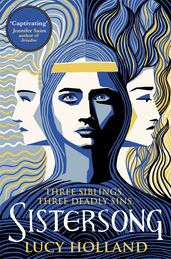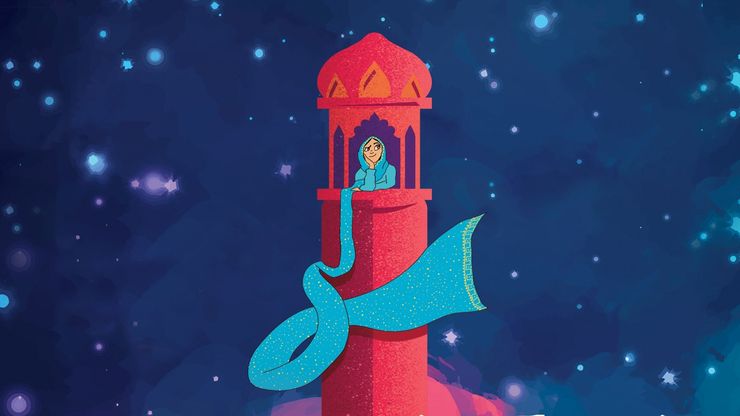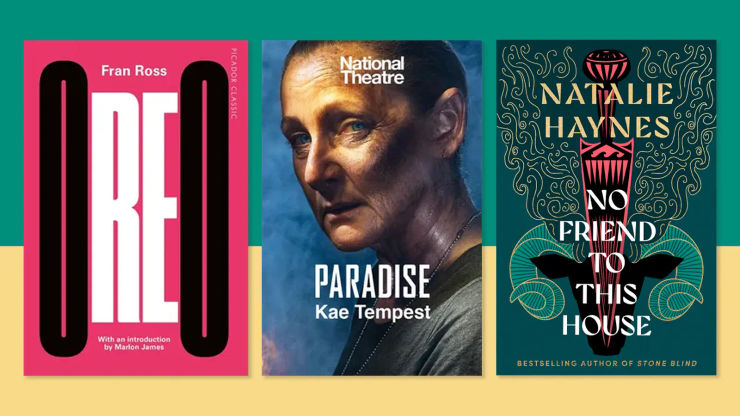The women reclaiming myths from male heroes
Lucy Holland on folklore’s fatigued stereotypes and the end of the patriarchal narrative.

An evil spinster embittered by her loveless existence. A jealous sister enraged by her sibling’s good looks. A power-hungry queen destined to be her own downfall. And of course, who could forget the innocent virgin, modestly awaiting her much-deserved happy ending. Sound familiar?
Why is it that when we look to folktales the women we find there sit so comfortably into the same stereotypes? Where are the trans and non-binary protagonists? And crucially . . . why are all the heroes, men?
Millennia of the male gaze may have taken its toll, but tale by tale, these stories are being rewritten. Literally.
As legions of authors turn their talents to retelling folklore and liberating the marginalised voices of myth, Lucy Holland, author of Sistersong, explores how we might all find freedom when we release characters from these strange gender roles.
‘And so we have long been at the mercy of books written by representatives of the dominant social narrative: men.’
One of my favourite literary trends right now is the restoration of women to famous epics and stories that have historically focused on men. Examples include Madeline Miller’s Circe, Natalie Haynes’ A Thousand Ships and, most recently, Genevieve Gornichec’s excellent The Witch’s Heart, which shunts even Loki to one side in favour of his hitherto obscure witch wife, the giantess, Angrboda.
These books don’t just place women back into the stories, they give women’s stories back to them. And recent female-authored translations of epics like The Odyssey and Beowulf are offering fresh perspectives on familiar characters. We necessarily come to stories – as both readers and writers – laden with the preconceptions of our upbringing. And so we have long been at the mercy of books written by representatives of the dominant social narrative: men.
‘These books don’t just place women back into the stories, they give women’s stories back to them.’
This is not to bash the old translations, the old stories; it’s to acknowledge that the tales coming down to us have come down through a male gaze and a male lens. There are other viewpoints to be found in these stories and there are other storytellers ready to tell them. This is their time.
These thoughts underpin my own interpretation of an old tale. Although women are the main characters of the Two Sisters ballad, its driving force is patriarchal. The Two Sisters is what happens to women when their lives are governed by patriarchy. Because at its heart, it’s a story of sexual jealousy, that old stereotype of women fighting over a man. Even the power of sisterhood falls in the face of it. The only character who comes out unscathed is the object of the sisters’ quarrel.
It’s a pattern that keeps repeating. Even when women are central to the narrative, they lack agency. Their actions are governed by the gender roles that society has assigned them – and these are the roles that women are expected to assume in traditional folktales. We are witches, virgins, conniving spinsters. We are ghosts and sinners. When we are queens, we’re evil. When we’re mothers, we are usually dead. When we are chaste, modest and kind-hearted, we win the handsome prince. What we don’t win is freedom from an oppressive set of prescribed storylines.
‘We are witches, virgins, conniving spinsters. We are ghosts and sinners. When we are queens, we’re evil. When we’re mothers, we are usually dead.’
Men are stereotyped too, of course, to equally devastating effect. But generally speaking, they are offered more space to move within the confines of a story. And when they do behave in a non-stereotypical manner, they are more likely to be rewarded than punished for it. However, as long as women are constrained by type, I would argue that men aren’t free either. If we expanded the dominant narrative to include trans and non-binary people, we might finally win the freedom to tell unbiased stories.
Folktales and fairytales are powerful forces for conveying a moral message, but we ought to be wary of the methods they use – and of the moral itself. Who decides whether a story ends “well” for those involved? Does “well” simply mean that the characters have fulfilled the roles they have been assigned? Now that we’re in a position to interrogate our social structures, do we not have a responsibility to do so? Retelling allows us to dig beneath the surface of stories to find out how and why they have been remembered a certain way. And what might still be buried.
‘Retelling allows us to dig beneath the surface of stories to find out how and why they have been remembered a certain way. And what might still be buried.’
I love the idea of freeing women – and other characters with a tendency to be marginalised – from stories that try to contain them. Kristina Pérez did this marvellously at the end of her Sweet Black Waves trilogy, setting Tristan and Iseult free from the tragic myth that binds them. In his retelling of a medieval French romance, Alex Myers chose to do something similar – releasing one of the earliest recorded non-binary protagonists from a prescriptive and depressing ending. It is a decision I have taken too; while Sistersong channels the danger of restricting women to stereotypical roles, it also celebrates the power of writing your own story, of making room in the dominant narrative for all kinds of people.
With even more retellings of women’s stories on the horizon – Ariadne’s from Jennifer Saint, Helen’s and Klytemnestra’s from Claire Heywood – we are finally beginning to reclaim myths from male heroes. It’s time to tell a new story, and it’s not just women who deserve to be part of it.
Sistersong
by Lucy Holland
A powerfully moving and gripping retelling of an ancient tale, Lucy Holland's Sistersong retells the folk ballad ‘The Two Sisters.'
King Cador’s children inherit a land abandoned by the Romans, torn by warring tribes. Riva can cure others, but can’t heal her own scars. Keyne battles to be seen as the king’s son, although born a daughter. And Sinne dreams of love, longing for adventure. All three fear a life confined within the hold, protected from Saxon invaders.
But one day changes the course of their fates irrevocably. As ash falls from the sky, Myrdhin, a meddler and magician, and Tristan, a warrior whose secrets will tear the sisters apart, enter their lives.
The siblings discover the power that lies within them and the land, but become entangled in a web of treachery and heartbreak and must fight to forge their own paths in It’s a story that will shape the destiny of Britain.
If you're looking for the next book on your TBR list, read our edit of the best retellings of greek myths and fairytales here.



